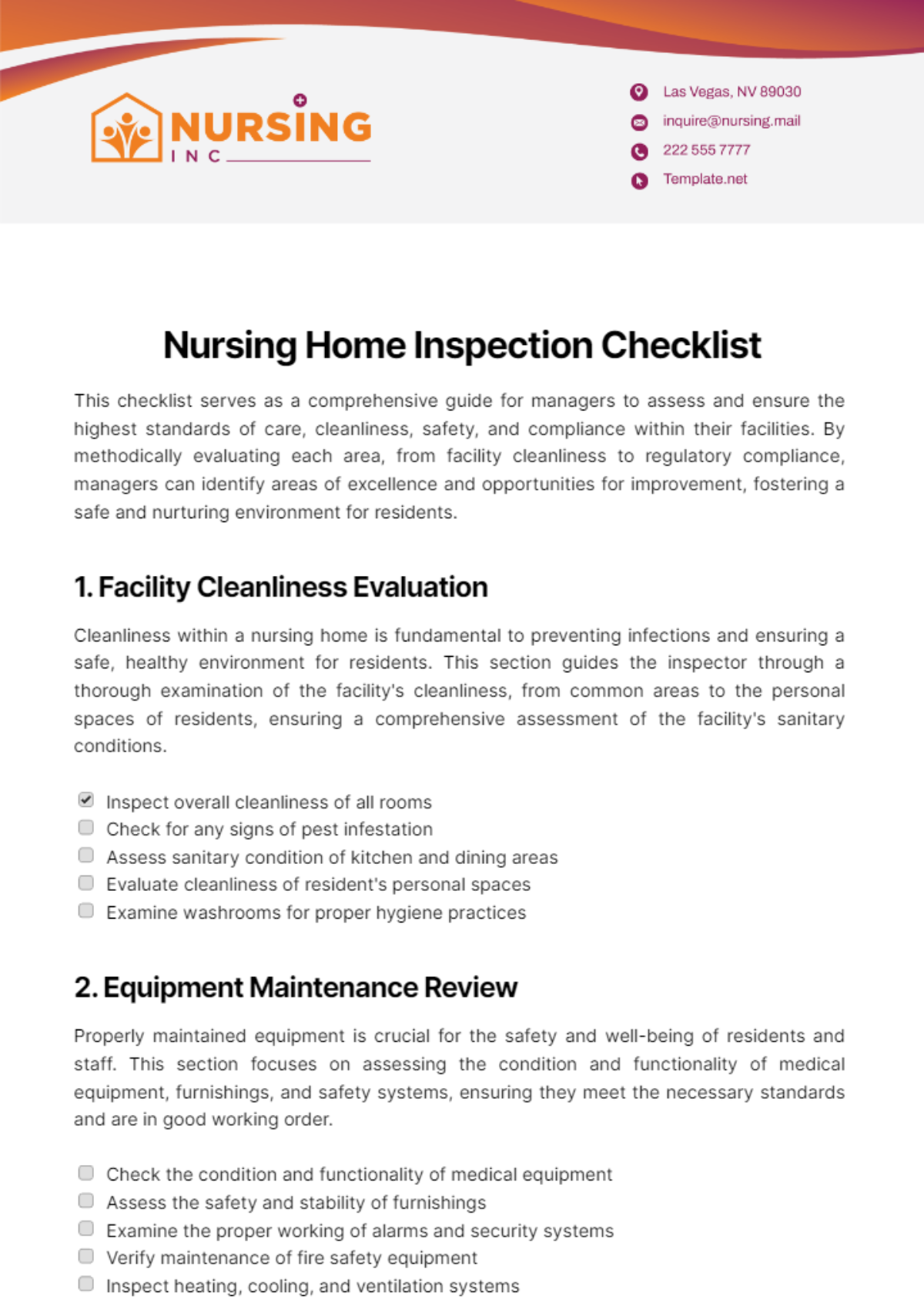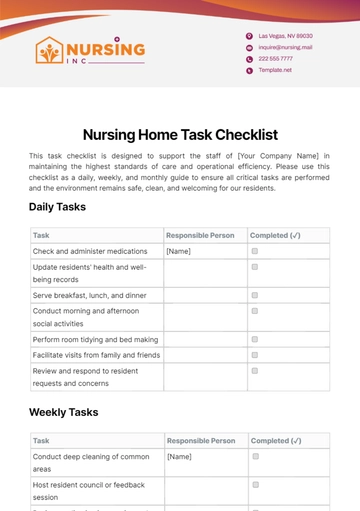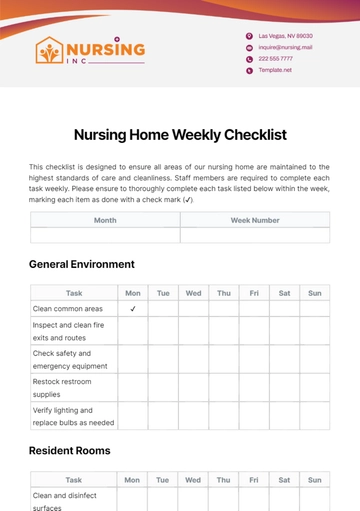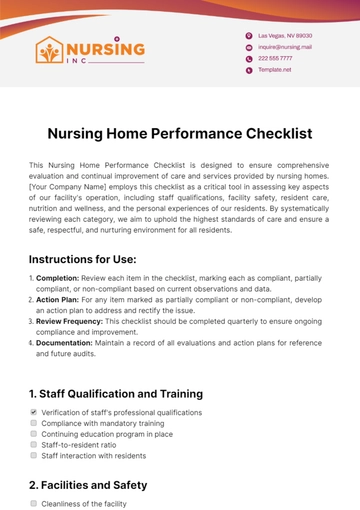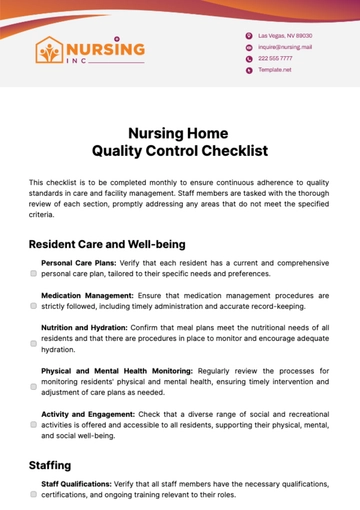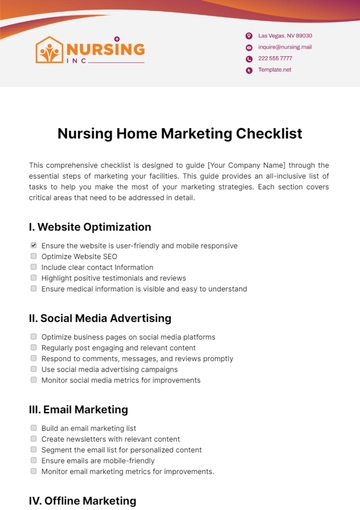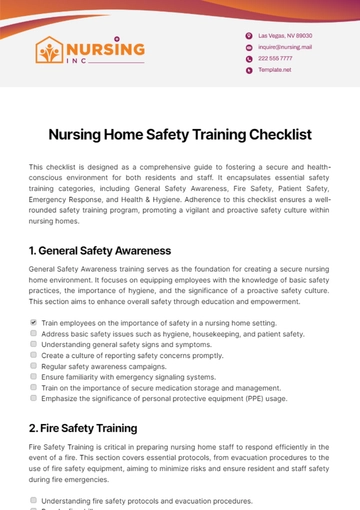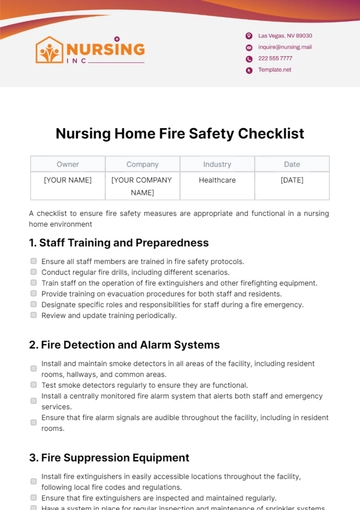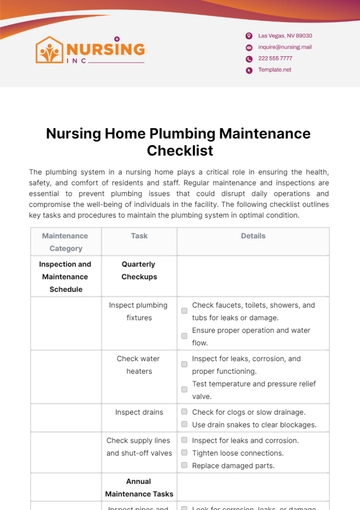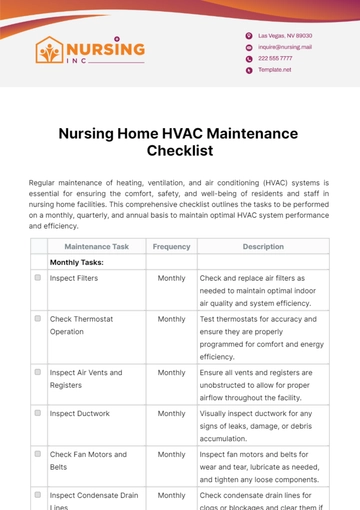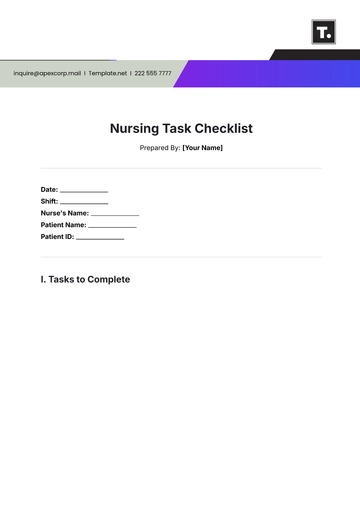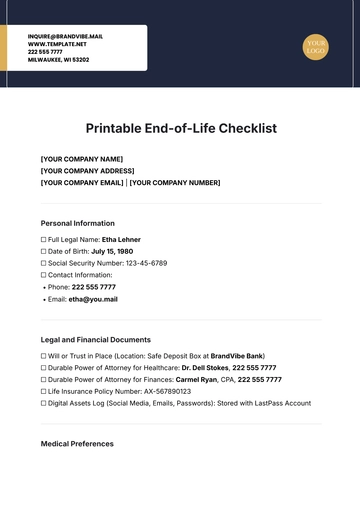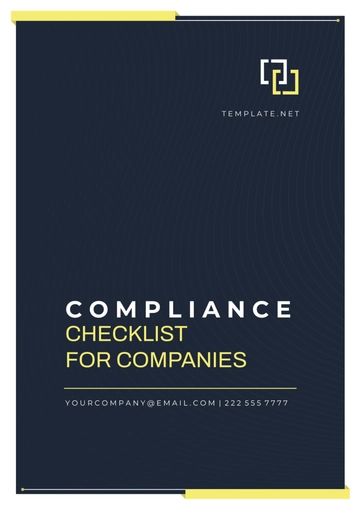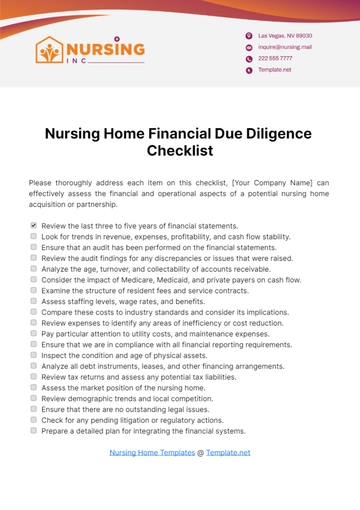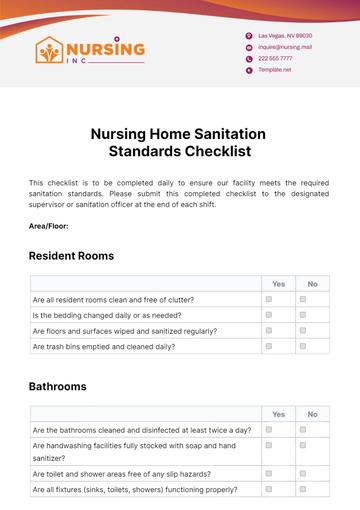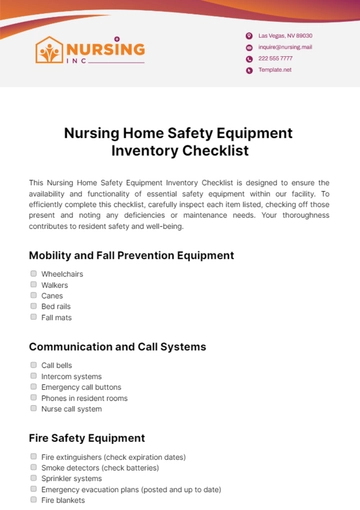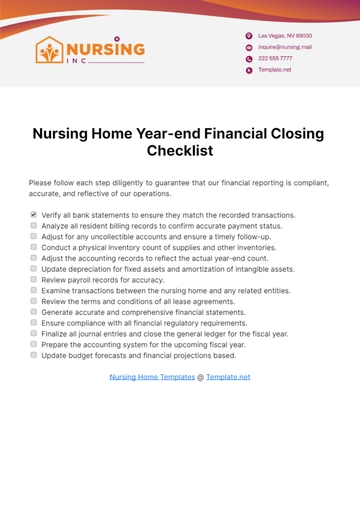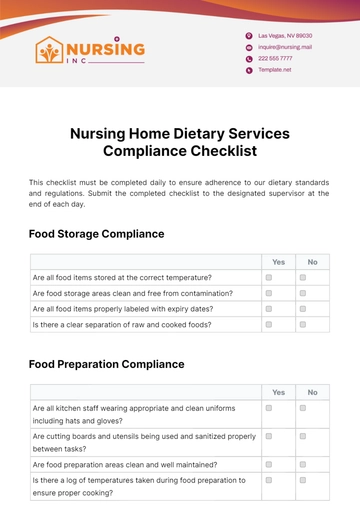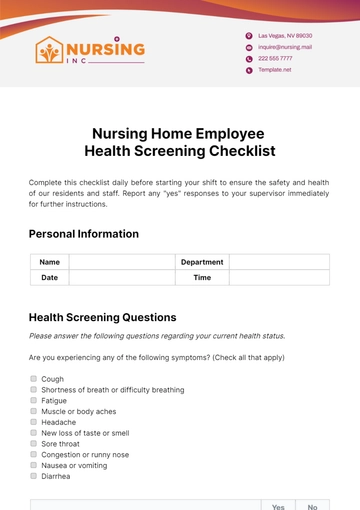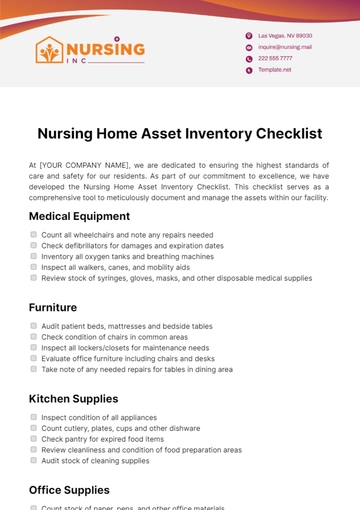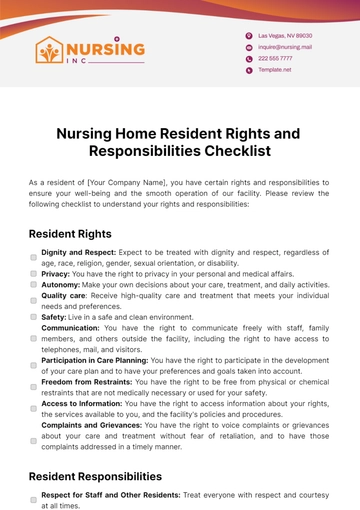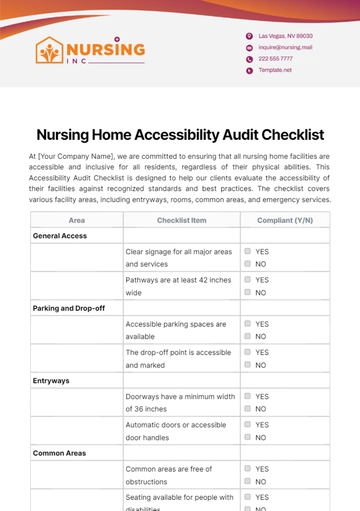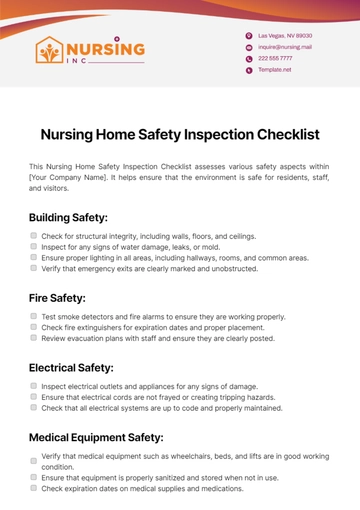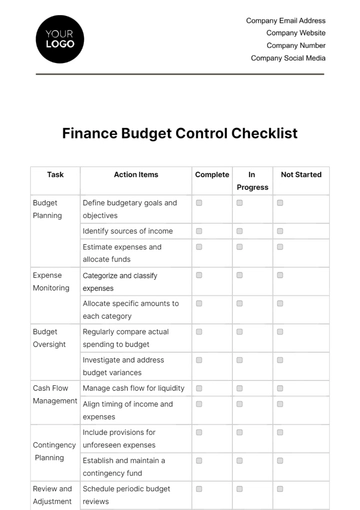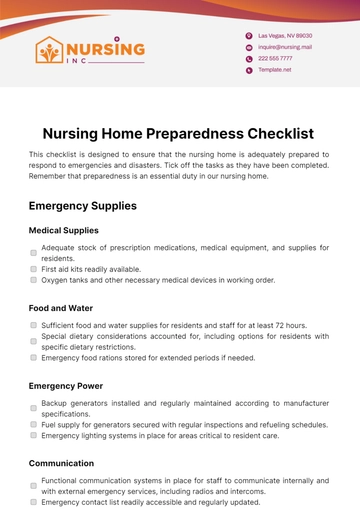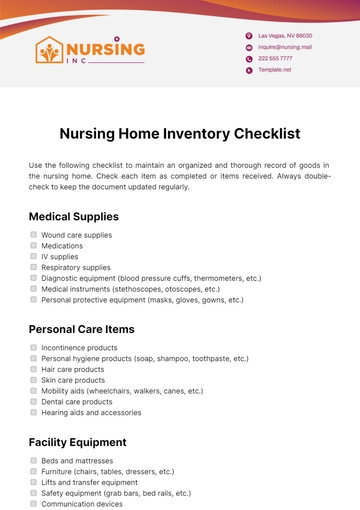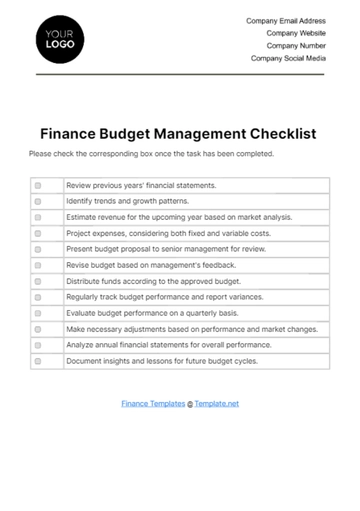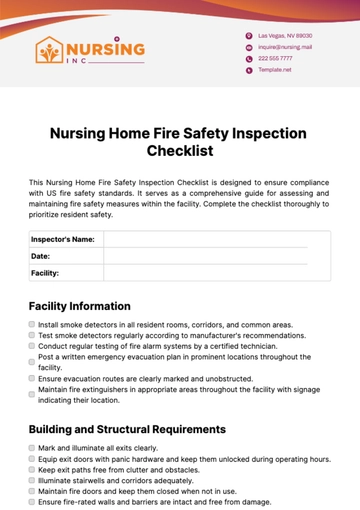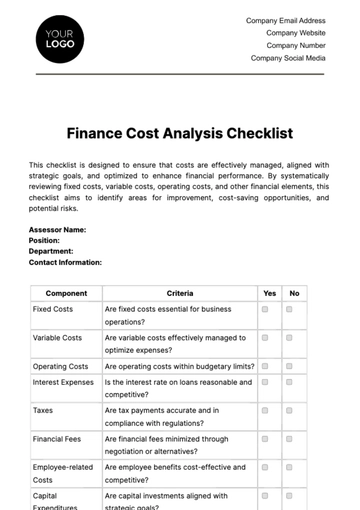Nursing Home Inspection Checklist
This checklist serves as a comprehensive guide for managers to assess and ensure the highest standards of care, cleanliness, safety, and compliance within their facilities. By methodically evaluating each area, from facility cleanliness to regulatory compliance, managers can identify areas of excellence and opportunities for improvement, fostering a safe and nurturing environment for residents.
1. Facility Cleanliness Evaluation
Cleanliness within a nursing home is fundamental to preventing infections and ensuring a safe, healthy environment for residents. This section guides the inspector through a thorough examination of the facility's cleanliness, from common areas to the personal spaces of residents, ensuring a comprehensive assessment of the facility's sanitary conditions.
2. Equipment Maintenance Review
Properly maintained equipment is crucial for the safety and well-being of residents and staff. This section focuses on assessing the condition and functionality of medical equipment, furnishings, and safety systems, ensuring they meet the necessary standards and are in good working order.
3. Staff Qualifications and Performance
The qualifications and performance of the staff directly impact the quality of care provided to residents. This section emphasizes the verification of staff credentials, assessment of staffing levels, and evaluation of staff training and interactions, ensuring a high standard of care and professionalism.
4. Resident Satisfaction Evaluation
Resident satisfaction is a key indicator of the quality of life in a nursing home. This section focuses on gathering feedback from residents regarding their care, meals, and the provision of recreational activities, aiming to enhance the personalization and enjoyment of their living spaces.
5. Regulatory Compliance
Compliance with regulatory standards is non-negotiable for the operation of nursing homes. This section guides inspectors through verifying adherence to health codes, reviewing emergency plans, and evaluating drug management systems, ensuring the facility meets all legal and safety requirements.
Prepared By: [Your Name]
Nursing Home Templates @ Template.net
